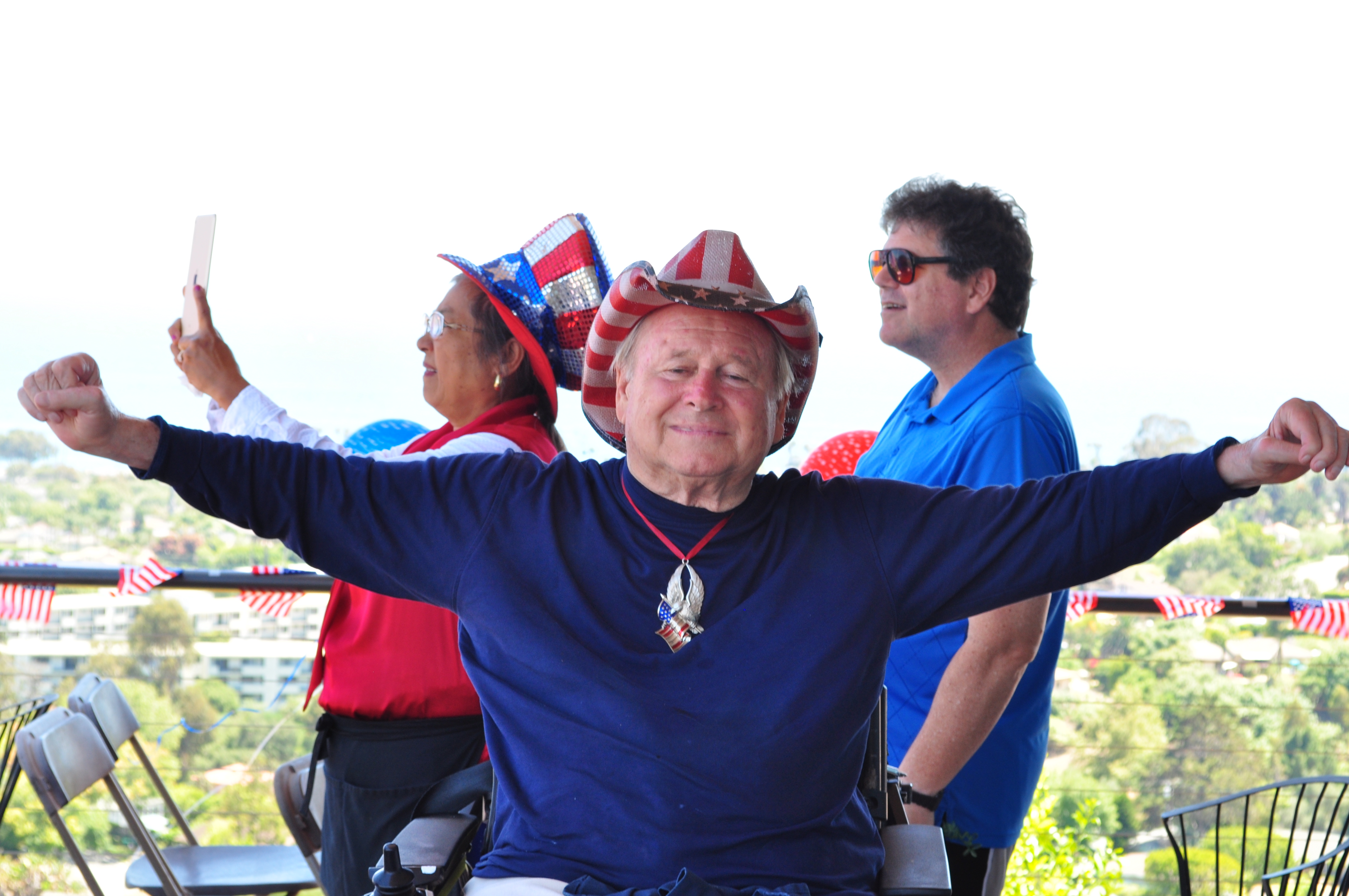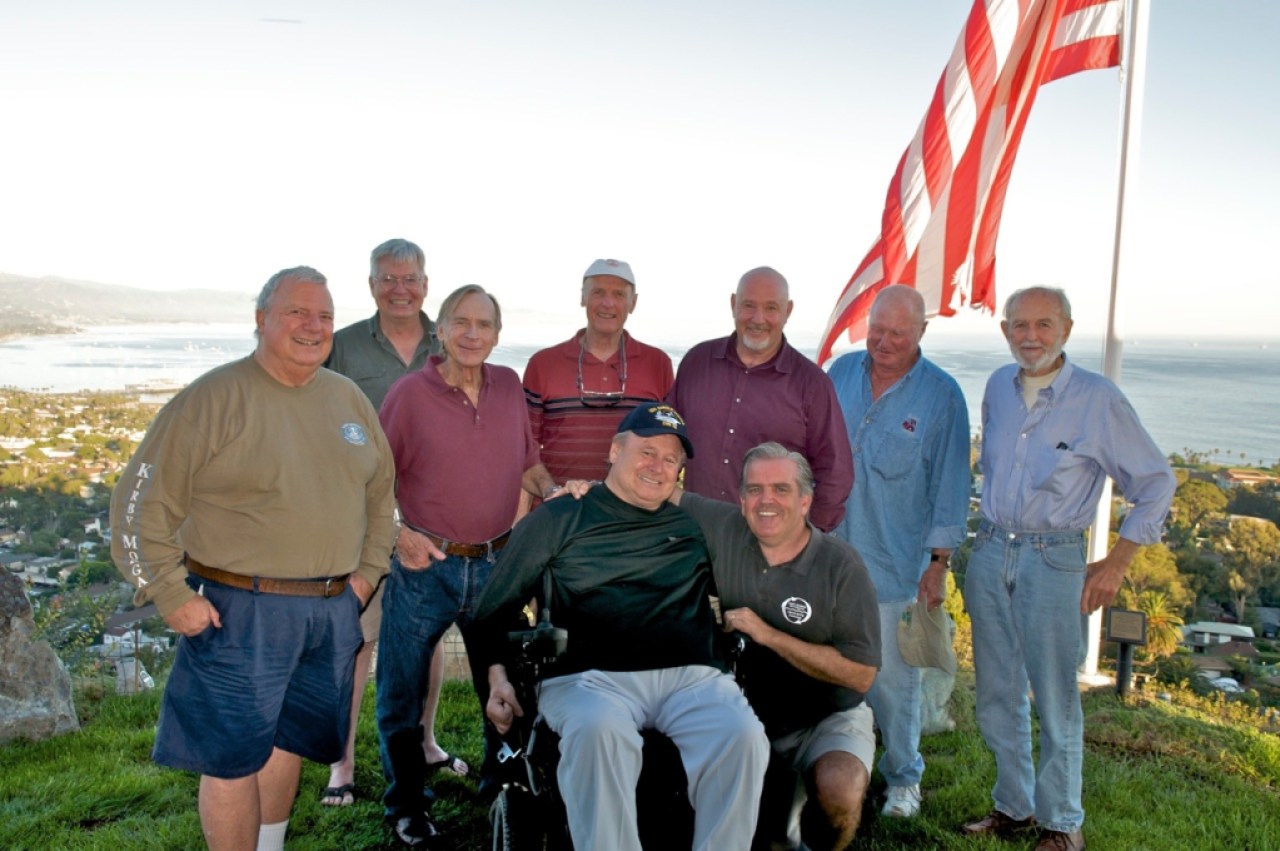
Laddie would never admit his birth date, and in truth, we all prefer to think of him as timeless. He was a mentor-turned-friend to so many, and a legend in the abalone business and commercial diving. Here are just a couple remembrances out of thousands.
When you’re lying peacefully at anchor in a secluded cove, preparing dinner, you don’t appreciate things that go bump in the night. I rushed out of my cabin to find the bow of a boat pushed against my stern.
The intruder from the abalone boat Bottom Bandit introduced himself as Laddie Handelman. I had heard of Laddie from fellow abalone divers. I invited him aboard for dinner, thus beginning a friendship that endured from our introduction in 1984 until his death on October 26, 2020.

Laddie had heard of me and asked if I knew of any abalone spots. I had retired from abalone diving because of several cases of the bends. I told him about an overlooked spot.
Laddie liked my boat so much that he bought into it as a partner. We decided to negotiate a contract for the boat’s use. We wrangled over terms, then simply shook hands. Since then, we’ve done the same. Our handshakes were our bond. The partnership was built on trust, seemingly a rarity today.

Laddie and I got involved in another boat, the Spirit. We chartered it mainly to scientists. Laddie agreed to my using it for marine mammal rescue. Over the years, my team rescued thousands of marine mammals along the coast and at the Channel Islands.
By the early 1990s, I was very concerned about offshore projects that potentially could harm marine wildlife. Since 1976, I had rescued marine mammals as the founder and volunteer director of the nonprofit Santa Barbara Marine Mammal Center, which is still involved in whale rescue. I had no intention of volunteering my services to the military (again), or to industry or government. Accordingly, Laddie and I formed the Marine Mammal Consulting Group, a for-profit organization.
Laddie, as a graduate of the Harvard Business School and founder of two major global commercial-diving firms, certainly had the business knowledge. I was the biologist. I loved getting into the field with animals and with many great people who joined us. Later, we were joined by Patricia Putnam, an able administrator and someone who looked after everyone.
The partnership worked because we listened to one another and respected each other, even when we disagreed. As one example, Laddie didn’t like sea otters because they ate abalones. As an abalone diver, I understood, but I had extreme respect for sea otters because they were survivors.
When Laddie broke his neck in a skiing accident in 1985, he kept right on with everything. He didn’t complain; instead, he praised the courage of wheelchair patients and founded a support group here called Outlook. He also supported the local Boys & Girls Club because the Boys Club had such a positive influence on him in his teens.
Three years ago, I had two strokes and a heart attack. Laddie stayed at my bedside for hours, hoping I would pull through. I think his indomitable fighting spirit helped me during those difficult times.

Very recently, I visited Laddie to say hello, to bring him and Linda, his wife, some of my smoked salmon, and to swap abalone stories. One favorite was when we brought retired abalone divers over to San Miguel Island. But one fellow was the broker who managed insurance for the Spirit. He was a member of the Long Beach Neptunes, a club that spawned some world-class free-divers.
We all splashed around, but I could see the retired divers were having trouble, so I picked some abalones for them. I got back aboard, and the insurance man asked how I did. He had only two or three abalones in his bag. I tossed my abalone bag aboard, and he was dumbfounded. He measured all my abalones and was astounded because they were well above legal size — and there were plenty of them. Apparently, he had never been beaten. I told him, “If I’d known this was a contest, I’d have really whipped your ass.” Laddie couldn’t stop laughing. The irony of the story is that we were in the same spot that I had told Laddie about when we first met. I ended my last meeting with Laddie by saying, “Thanks for everything.” —Peter Howorth

In 1979, I was a 19-year-old student at Florida Institute of Technology’s diving program when I attended a convention in New Orleans. At the booth for Oceaneering, a leading commercial diving firm, was Lad Handelman. By then, he was a white-collar businessman who traded in his copper collar from his abalone days to create and run a company that still dominates our industry today. We were wide-eyed wannabes, full of hopes and dreams. We were in awe of Oceaneering’s deep saturation diving technology and atmospheric diving systems.
Lad was one of the few busy executives who took time to talk to us. That made a huge impact on us and is something I always remember. Lad knew we were the future of his business, and a small investment of his time would later yield good returns. He was indeed correct.
In 1982, I ended up in Santa Barbara working for a competing diving firm. I met Lad again off Goleta Pier, when we were demonstrating a new atmospheric diving system, called the Mantis, for NASA astronaut Kathy Sullivan. At Lad’s urging, we had Sullivan become an “aquanaut” as she piloted our submersible to contrast the weightlessness of inner space versus outer space from the pier. It was not a highly publicized event at that time, but I was impressed with our joint collaboration and her effortless skill as a sub pilot. She later became the first woman to walk in space from the space shuttle Challenger.
The suit used by astronaut Sylvia Earle, the JIM Suit, has been on display at the Santa Barbara Maritime Museum. Laddie was instrumental in the establishment and development of our maritime museum in the harbor 20 years ago. As president of the board there, I was very fortunate to have had a longtime friend in Laddie to advise us and give input.

I recently retired after 30 years of training commercial divers at Santa Barbara City College’s Marine Diving Technology Program. Laddie served on our advisory committee for decades. That same willingness to spend time with aspiring young students, to give back to an industry that he helped pioneer, always existed. He was accessible — a tremendous resource for everyone. I witnessed that same excitement and optimism in my students that I felt over 40 years ago. He was the consummate teacher.
His mantra to our students was, “Take care of each other; sweat the small stuff.” Quite a simple statement but profoundly significant for people who put themselves in a harsh environment where mistakes can be fatal.
In commercial diving, a camaraderie exists regardless of who a person is, whether you like them or not, agree or disagree. Lives are at stake, and we all rely on each other to be successful in getting a job done. It is both a brotherhood and sisterhood. It is taught and passed on from one diver to the next.

Before I retired at SBCC, I took my 20 mixed-gas diving students up to Laddie’s house so they could meet a man who paved the way for an industry. You could have heard a pin drop as he told sea stories and advised them how to be successful in diving. I will cherish that moment. True long-term learning is accomplished by rich, real-life experiences with a diversity of people within a community.
Laddie’s spinal injury in 1985 did not stop his work or change his bright and positive demeanor. That same tenacity he applied to industry was channeled into the founding and service of other organizations. Recently, he said, “I used to think that gang members and divers were tough. Now I know what being tough really means. People in wheelchairs are amazingly upbeat. I am constantly inspired by these heroes.” He shifted into a higher gear and began broadening his efforts, not for his personal gain, but for altruism.
Although we have a lot of big egos in commercial diving, Laddie was never one of them. He came up the hard way. He learned from his mistakes and the mistakes of others. He treated all people with dignity and respect, regardless of who they were, including their economic or social status. Laddie was never traditional or conventional. That is the true entrepreneurial spirit and why Laddie’s life is an American success story. —Don Barthelmess

You must be logged in to post a comment.